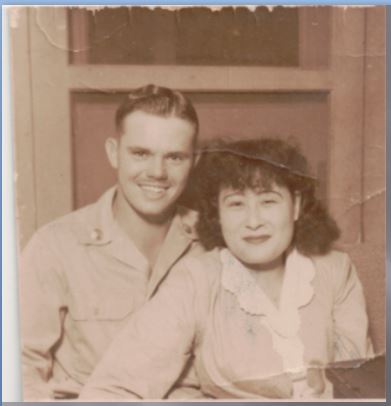52 Ancestors in 52 Weeks: Week 2- 2021
#52ancestors
Prompt: Family Legend
In the
old west, Malcom McCarley and one of his brothers, were fixing a fence. A
couple of gunslingers came by and shot one of the brothers. Their father,
Mitchel McCarley and another brother rode to Bowie to post a bond. The
brother who was able to get away and a
fourth brother rode out after the killers. One of the brothers came back and
the other was never seen again.
That is the family legend that my Mother brought home from a
reunion one year. Despite my grilling her, that is all she knew. Was this a
true story and if so, who was the McCarley brother who was shot by a
gunslinger?
I was very curious about the idea of them riding to Bowie to post
a bond. I thought a bond is what you
paid to get out of jail until your trial started. But a legal definition is
that "someone receives a bond (monetary payment) and promises to engage in
a specific act. Then a failure to perform results in them forfeiting the money.
So a bond is an incentive to do something.
I went to the courthouse in Montague County, where Bowie, Texas is
located. While I found some very
interesting things, but I didn't find anything about a bond being posted. I could only guess that it was some type of
reward for finding the killer.
As I discovered, many of the details in the original story were
wrong. In sorting out the brothers, I started with reviewing Mitchel McCarley's
sons and finding when they died. Using census records, I determined their last
census record and was able to find the date of death for most of them. Eli
and James seemed to disappear after the 1900 census, so I began to concentrate
on finding them.
Then due to the new rootsweb message boards,
I made contact with my Mother's 2nd cousin, Jim Hupp, gave me more details
about the story as he had heard it.
Jim
and Eli McCarley were repairing a fence that had been cut during the fence wars
of Texas when a group of gunslingers rode up. Jim and Eli were unarmed but the
gunslingers shot and killed Jim anyway. Eli got away. Their father, Mitchel
McCarley, and another brother, Sidney, rode to Durant to post a reward. While
they were gone, Eli and another brother, decided to ride out after them men who
shot Jim. The unknown brother returned to Nocona, but the other brother
disappeared. A few months later his family disappeared. It was believed that
they went to California.
As I continued to research, I found that
James (Jim) McCarley died on April 6, 1904 and was buried in Marshall County,
Oklahoma. Of the older boys in the family, Jim is the only one who died that
early in the 1900s. Eli disappeared in
the county records around that time, so it appeared that part of the story is
consistent. Since he died in Indian Territory, it makes more sense that Mitchel and Sidney rode to Durant, Oklahoma
rather than Bowie, Texas. I haven't been to the courthouse in Durant but the
courthouse in Montague County where Bowie is located did not have any records
about a reward or about the killing.
Sometime later, when the Library of Congress
started digitizing newspapers in the "Chronicling America" collection,
I found these articles in The Daily
Ardmoreite.
April 8, 1904. Henry Paris, who was present at the killing
of Jim McCarley by his brother, Oscar Paris, who escaped, was bound over
without bail at his trial yesterday.
The Daily Ardmoreite, April 6, 1904. Ardmore, I.T., April 8 - ? McCarley was shot and instantly killed Wednesday morning, three miles southeast of Madill. Oscar Paris is alleged to have done the shooting. The two men had quarreled about some land, and, it is said, Paris shot McCarley in the mouth, the ball passing through and breaking his neck. Both men were farmers.
Another article, called it a disagreement
among neighbors. Oscar Parish or Paris was eventually caught and bound over
for trial. I have searched the court records
in several courthouses in Oklahoma and the pre statehood court records housed
at the regional archives in Fort Worth, Texas, but I still have not found the
trial of Oscar Parish. However the archivist in Ft Worth told me that if the
case lasted past statehood, which was possible, then the records would still be
at the Oklahoma courthouse.
Just recently in searching the
"Chronicling America" database, I found the following excerpt from a
column titled " Technical Points Not in Favor: Criminal Court of Appeals
Not Hunting for Excuses to Set Aside Verdicts" in The Guthrie Daily Leader, dated May 10, 1911.
The case of Oscar Paris, sentenced to one year in prison and fined $100 for manslaughter, is reversed in an opinion by Judge Doyle, because the state was allowed to impeach one of its own witnesses, whose testimony helped out Paris' claim of self-defense. Paris killed J.W. McCarly south of Madill on April 6, 1904.
So, it appears that Oscar Paris/Parish, did not serve any time for killing Jim McCarley.I am still looking for the court case and the appeals. If as in our family story, Jim was unarmed, how could it be self
defense? Perhaps that is another detail
that was wrong.
And the brother who
disappeared? According to census records, Malcolm and his wife, Cassie are
living in Socorro, New Mexico in 1910 and Eli lived in Love County, Oklahoma in
1910 until his death in 1933. Love
County is very near where the rest of the family was living during those years,
so perhaps, it was Malcolm who disappeared from the family.






























